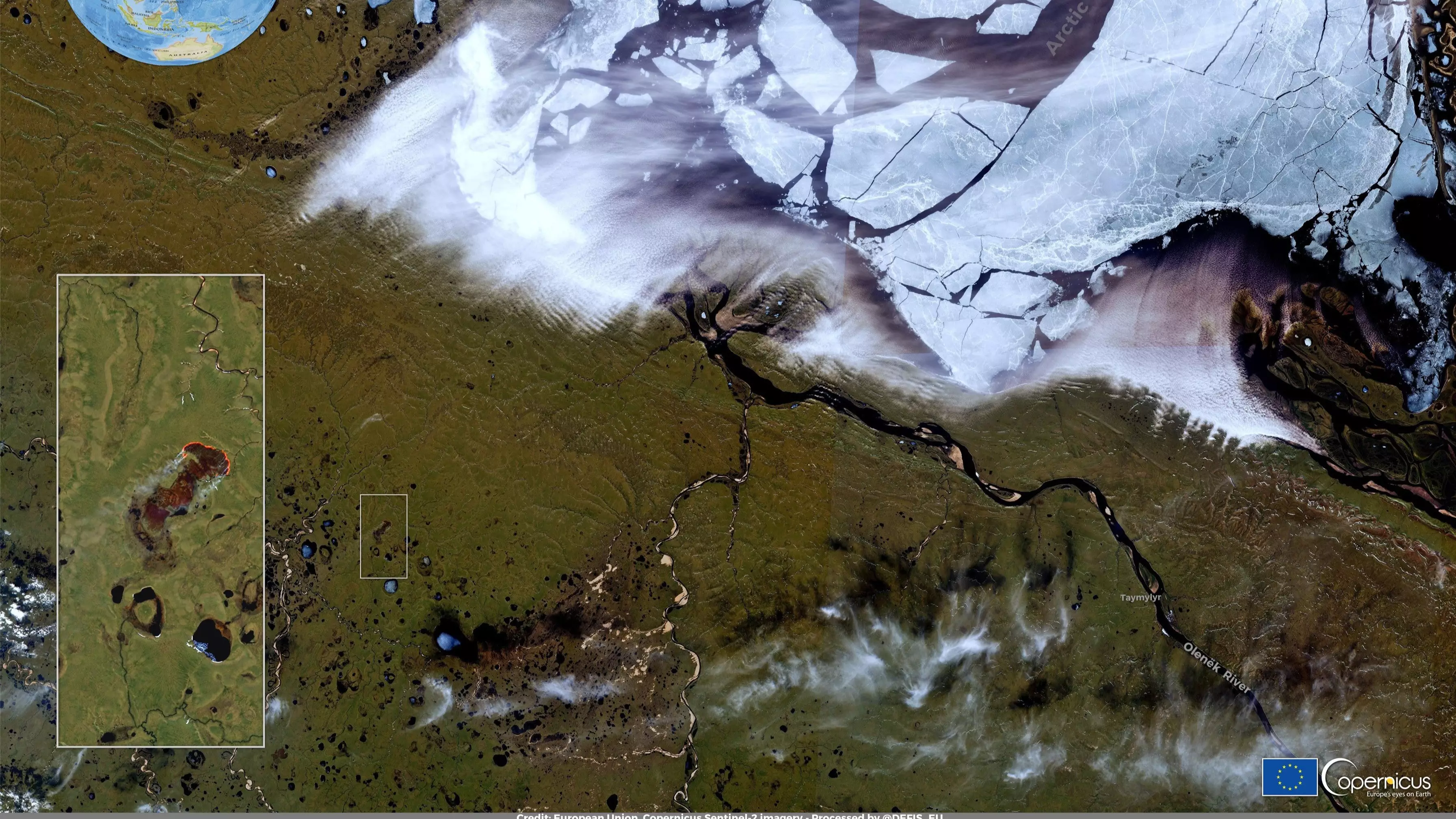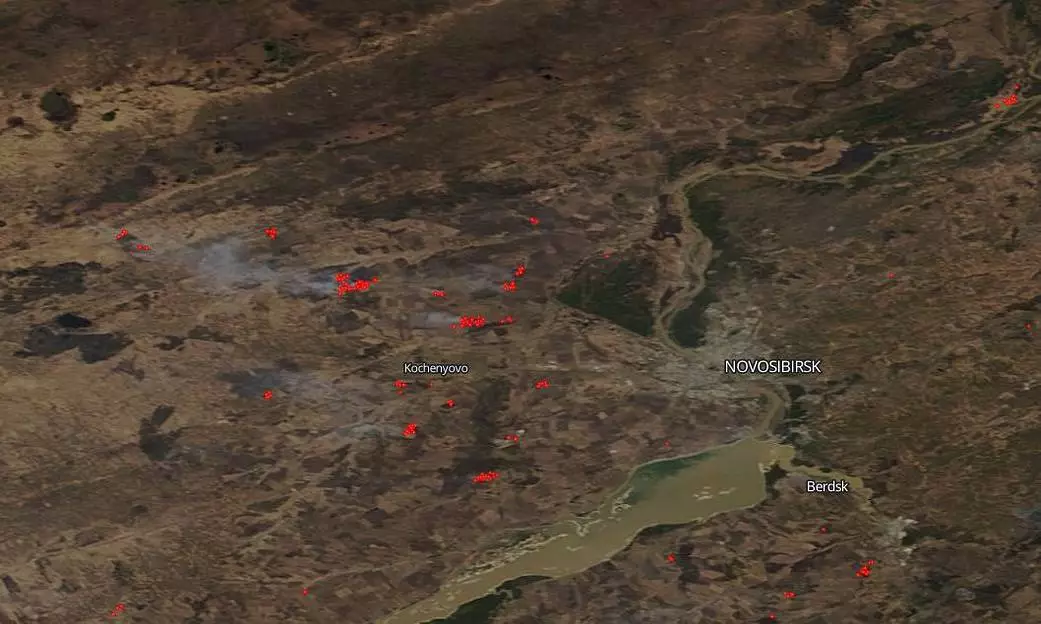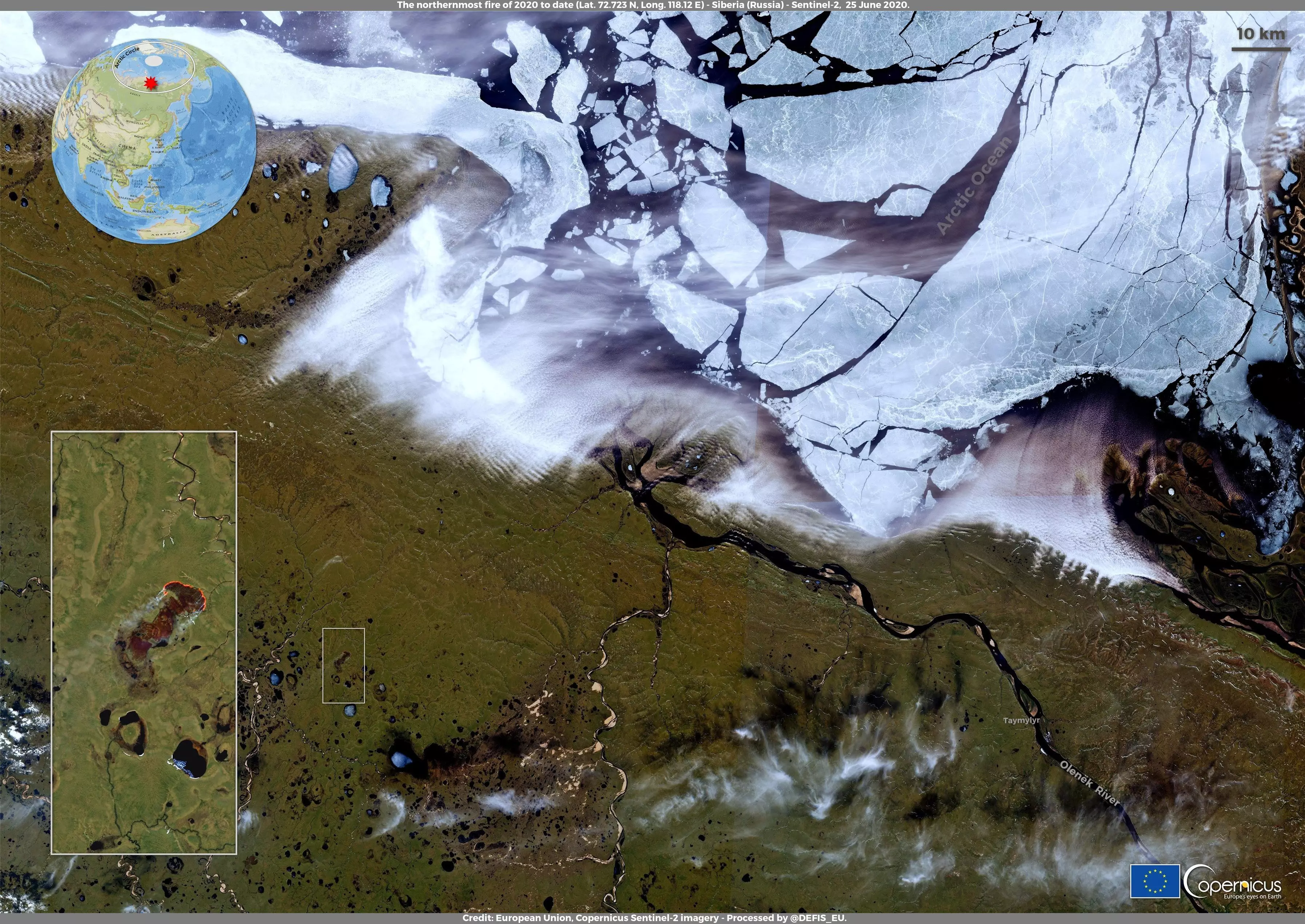
Satellite images have been recorded from space showing the wildfires burning further north than ever before.
The pictures, which have been captured from the European Union's Earth Observation Programme, show the blaze in the diamond-rich Yakutia region, also called the Sakha Republic, the coldest permanently inhabited region on the planet.
The fires come during a summer of unprecedented heat in northern parts of Siberia.

Advert
According to the EU's Earth Observation Programme, the inferno is believed to be 'the most northernmost in recent years within the Arctic Circle', leading to concerns from scientists.
According to ABC, temperatures hit 38 degrees Celsius (100.4 degrees Fahrenheit) in the Russian Arctic town of Verkhoyansk - a place known for being frozen.
University of Michigan environmental school dean Jonathan Overpeck, a climate scientist, told the news outlet: "The Arctic is figuratively and literally on fire - it's warming much faster than we thought it would in response to rising levels of carbon dioxide and other greenhouse gases in the atmosphere, and this warming is leading to a rapid meltdown and increase in wildfires.
"The record warming in Siberia is a warning sign of major proportions."
Advert
Such prolonged Siberian warmth hasn't been seen for thousands of years 'and it is another sign that the Arctic amplifies global warming even more than we thought,' Overpeck said.

According to the MailOnline, the fire is less than eight miles north of an inferno registered last year by the same satellite monitoring programme which uses infrared sensing capabilities to detect active fires.
Increasing temperatures in Siberia are thought to be linked to prolonged wildfires which get worse each and every year.
Advert
They also cause the thawing of the permafrost - what buildings and pipelines are built on. Last month a catastrophic oil spill occurred in the Arctic city of Norilsk which was partly blamed on melting permafrost.
Russian President, Vladimir Putin, declared a state of emergency after the huge amount of fuel from a power plant spilled into a river in the Arctic Circle.
In a televised governmental meeting, Mr Putin criticised the head of the company and local government officials for their perceived slow reaction to the environmental catastrophe.
Featured Image Credit: European Union Earth Observation ProgrammeTopics: Environment, News